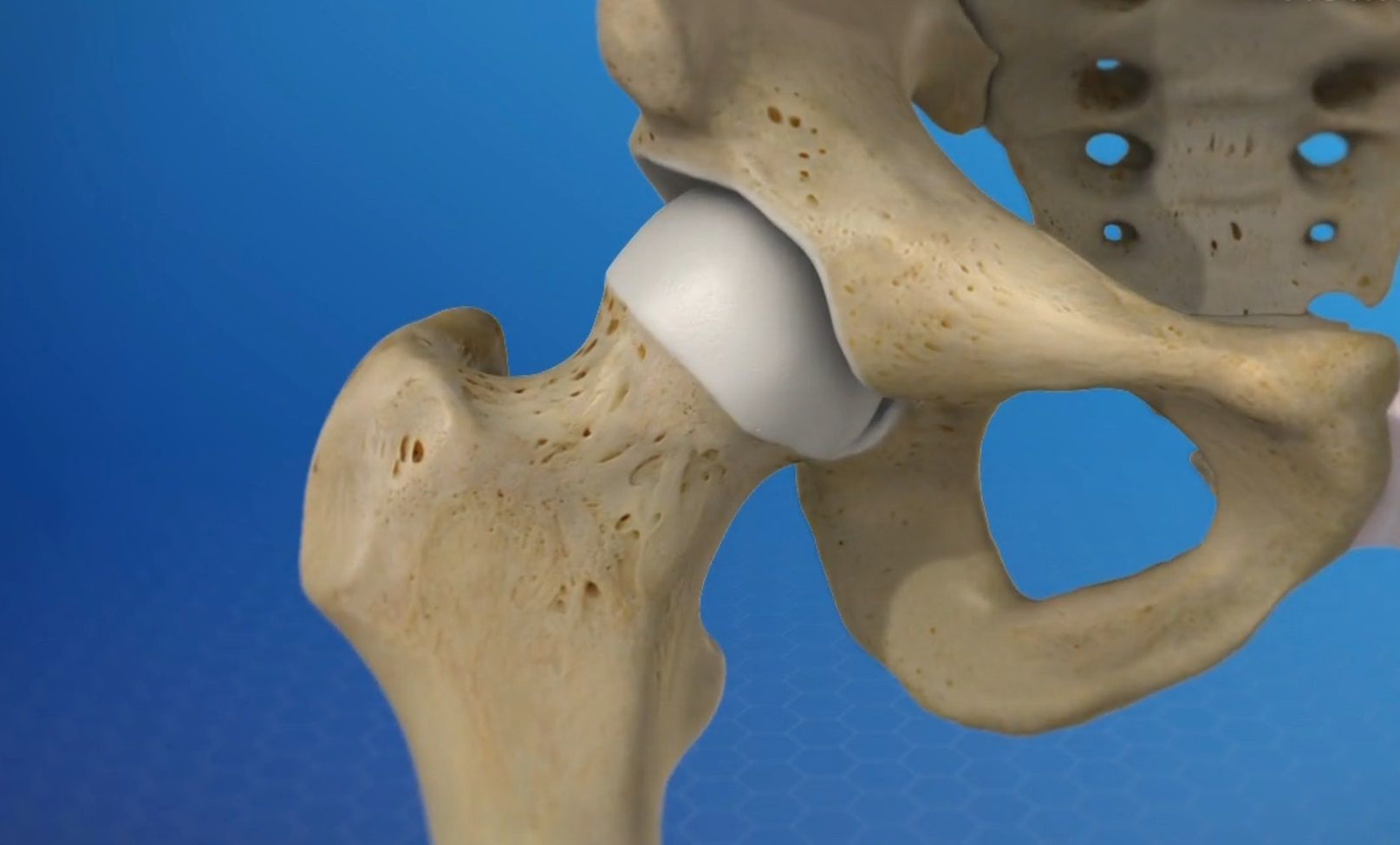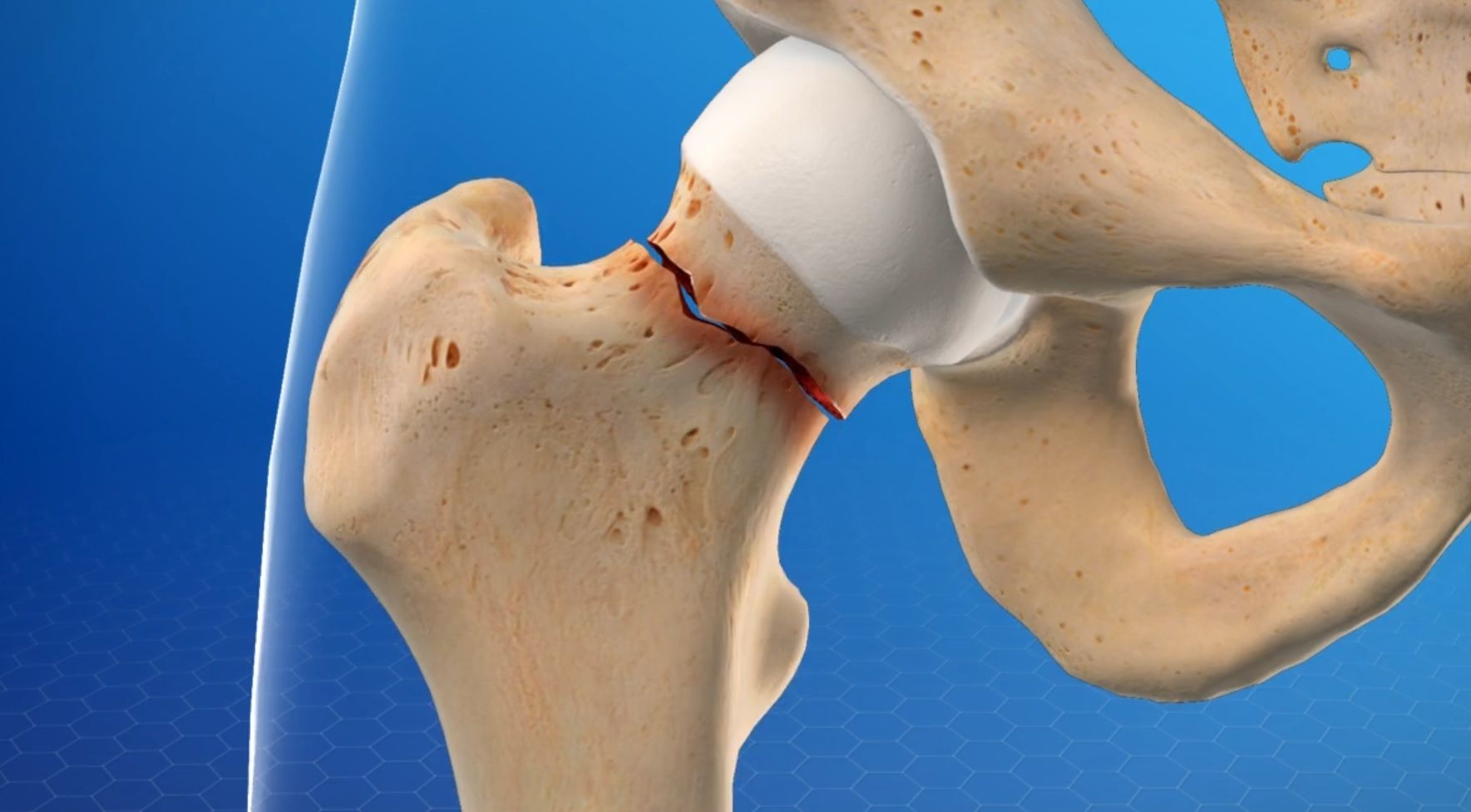Total Hip Replacement
Total Hip Replacement
Overview
In a total hip replacement surgery, the parts of your damaged hip joint are replaced with implants to recreate the ball and socket. This procedure reduces pain and restores hip mobility and function.
Preparation
To start the surgery, you are put to sleep with general anesthesia. The surgeon makes an incision along the side of your body to expose your hip joint. The damaged head of your femur (the “ball”) is removed so that the hip joint can be separated.
Pelvic Implant
The surgeon then focuses on the pelvis and carefully removes damaged bone and cartilage in the hip joint’s “socket”. The surgeon inserts a metal socket into the cavity and secures it with bone cement or screws. The surgeon places a tough liner into the socket, creating the smooth surface for the ball to move within.
Femur Implant
Attention then shifts to the femur. The surgeon hollows out the end of the femur and inserts a long, narrow implant called a stem. A ball is fitted to the top of the stem. The ball is then placed into the socket and the joint’s range of motion is tested.
End of Procedure and Aftercare
When the total hip replacement procedure is complete, the incision is stitched closed and bandaged. These surgeries can be done outpatient but often require a brief hospitalization. Your hip will feel sore at the surgery site. You will likely need physical therapy to adjust to the implants and your wider range of motion.
Revised from www.viewmedica.com © Swarm Interactive. Unauthorized duplication is strictly forbidden.
- Category / Surgery




